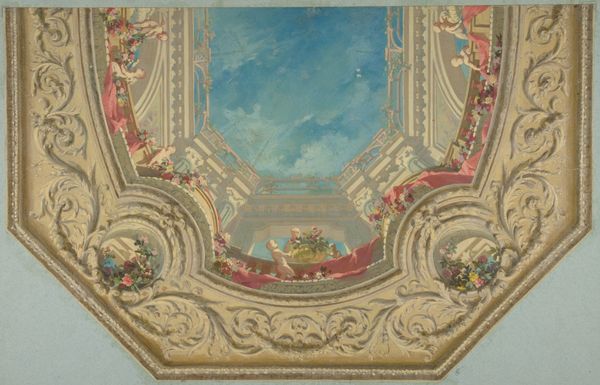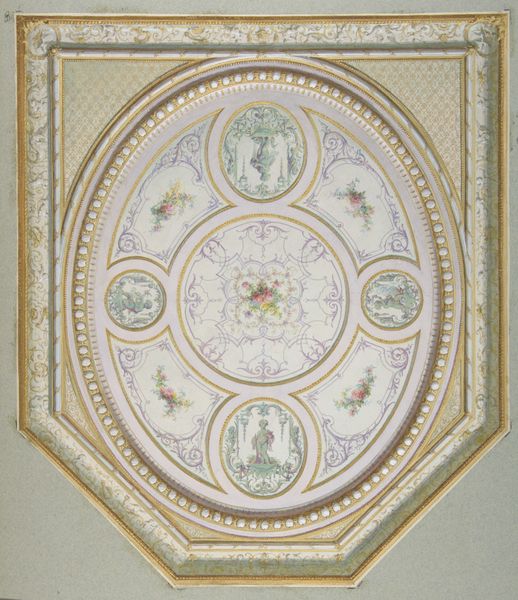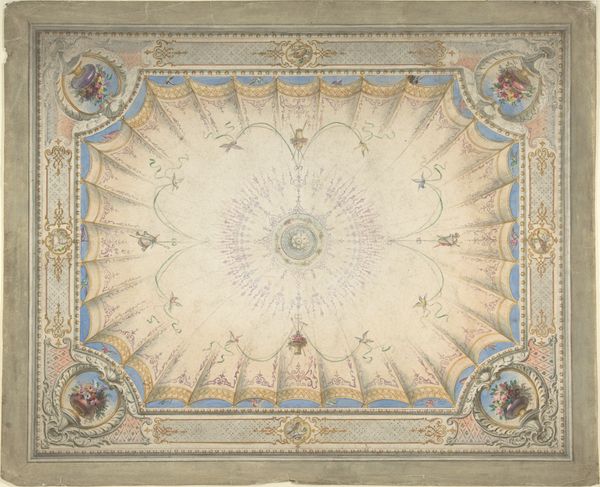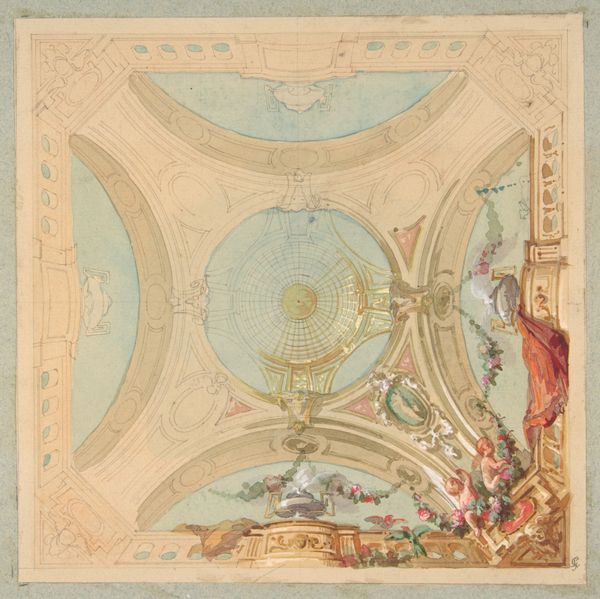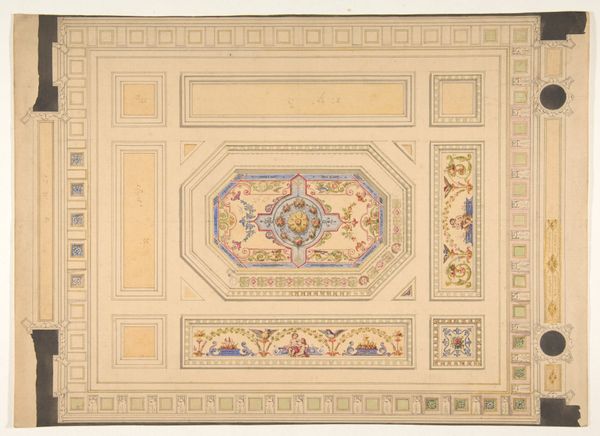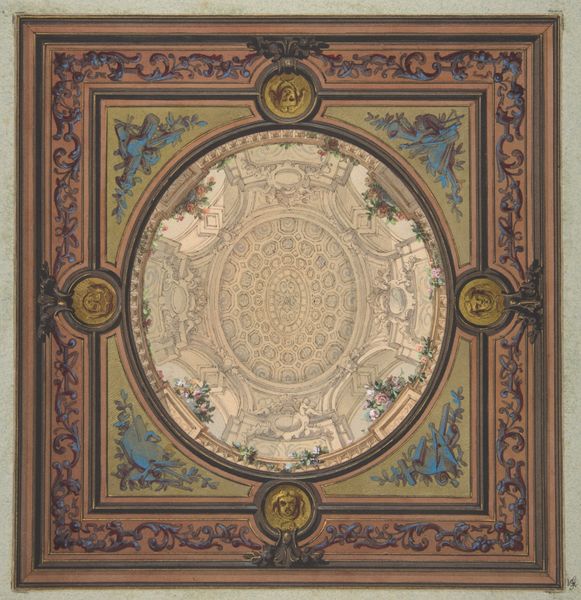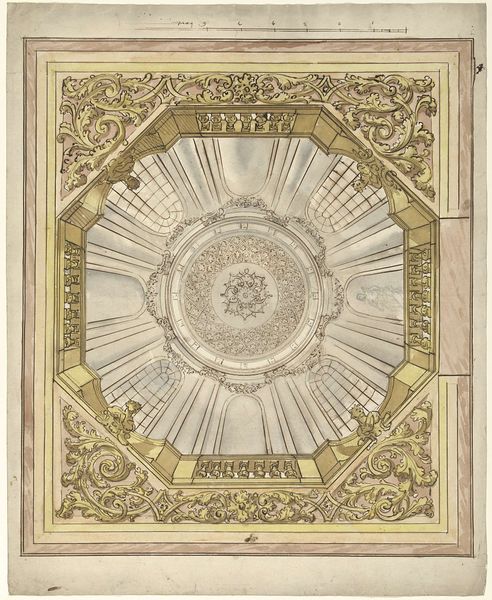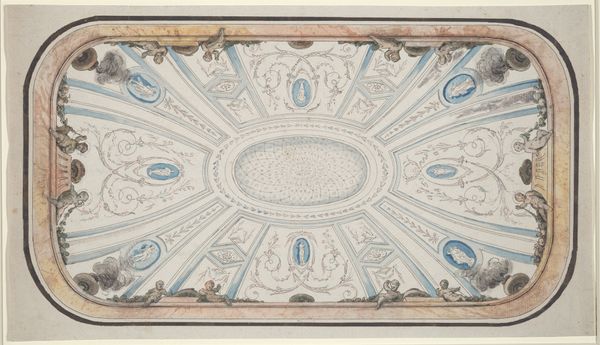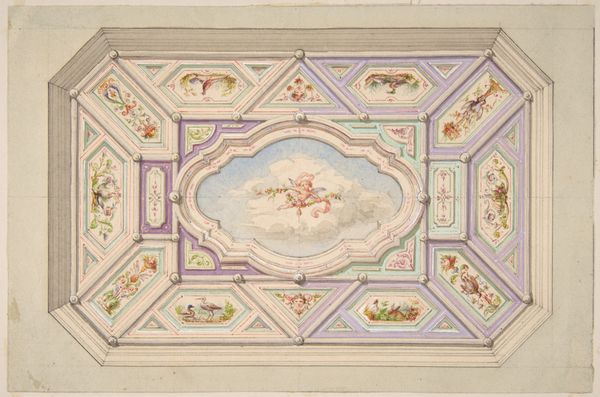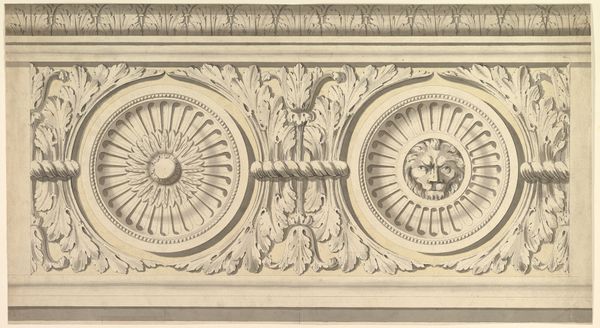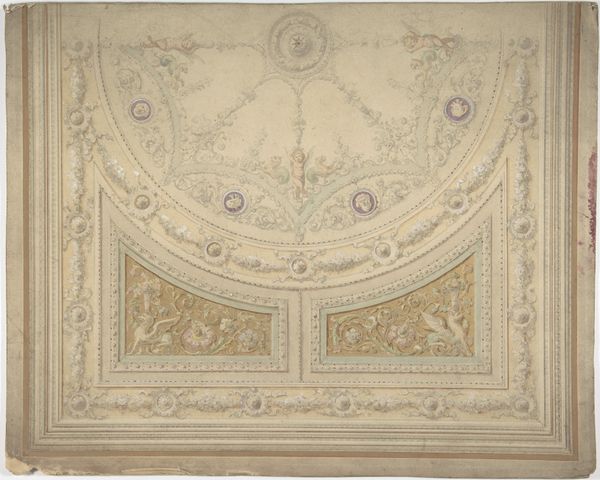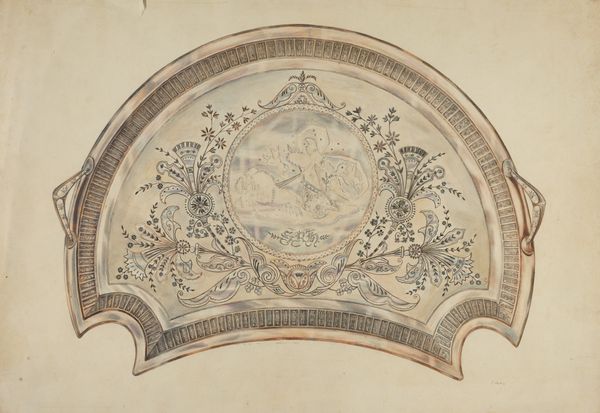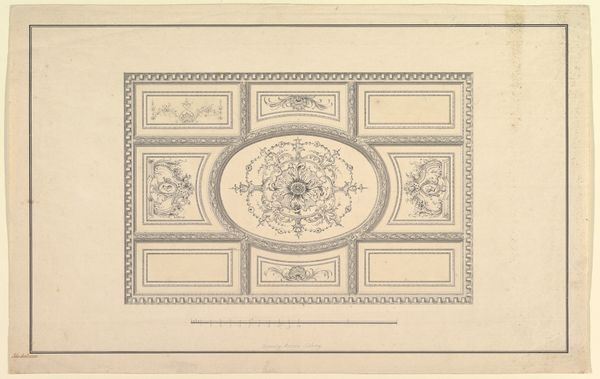
Design for a ceiling with trompe l'oeil balustrade 1850 - 1900
0:00
0:00
Dimensions: Overall: 14 13/16 x 10 9/16 in. (37.6 x 26.8 cm)
Copyright: Public Domain
Curator: The drawing before us, likely created between 1850 and 1900, is attributed to Jules-Edmond-Charles Lachaise. This watercolor design offers a tantalizing glimpse of a trompe-l'oeil ceiling with a balustrade. Editor: My first impression is one of airy lightness. The colors are delicate, almost pastel, evoking a feeling of standing beneath a serene, open sky. It definitely pulls the eye upward. Curator: It's a very interesting reflection of the architectural aspirations in Europe at the time. Trompe-l'oeil, meaning "deceives the eye," allowed designers to create illusions of depth and grandeur in interior spaces, often for patrons seeking to display a certain status. The resurgence of neoclassicism also speaks to the importance of imperialistic aesthetics. Editor: The visual trickery is compelling; the painted balustrade lined with floral arrangements creates this delightful fiction of an opening above. And what could be seen through that opening is even more significant, an implied higher realm, suggesting not just wealth or class, but perhaps also spiritual aspiration. Curator: Absolutely, we can consider that through the lens of power and gender. Architectural flourishes of this kind were commonly implemented to reinforce dominant class structures but, importantly, we could consider these floral motifs as signifiers for wealth and cultivation; women, of course, historically carried the double burden of class expectations, especially visible domesticity. Editor: The centrality of the circular design contributes to the sense of implied importance too. Circular motifs carry rich symbolism cross-culturally representing totality and perfection and cycles of time. It underscores the permanence the client may have been striving for. Curator: Very astute! I'd agree. The very placement of this potential art piece, in a room's ceiling, can become symbolic as a social reminder of what and who one "looks up to" in 19th-century Europe. Editor: It's amazing how this single sketch can unravel so many interwoven layers of symbolism and meaning. A truly effective illusion. Curator: It reminds us that architectural spaces are anything but neutral, reflecting historical social dynamics and political intentions. Editor: And, indeed, that visual art holds incredible power to trigger emotions that affect those dynamics too.
Comments
No comments
Be the first to comment and join the conversation on the ultimate creative platform.
